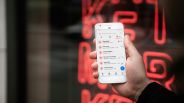Android offers remarkable flexibility for users to personalize their devices, making it easily adaptable to different preferences and needs. This guide focuses on helpful tips for new Android users, especially those transitioning from iPhone, aiming to customize the Android home screen, utilize Android widgets for beginners, and ease the iPhone to Android customization experience.
Customize Android Home Screen
Customizing the Android home screen is the first step to making an Android device truly your own. Users can start by long-pressing on an empty area of the home screen to access options such as wallpapers, widgets, and home screen settings. Organizing apps can be efficiently done by creating folders and decluttering the interface, prioritizing frequently used apps for quick access. Android also allows resizing widgets by simply dragging their edges to better match the layout and user needs.
Applying icon packs downloaded from the Google Play Store can dramatically change the look of app icons, often complemented by built-in theme stores like Samsung's or Xiaomi's for a cohesive appearance. Selecting dynamic or live wallpapers adds an additional layer of personalization, giving the home screen a lively feel. Utilizing apps like WidgetClub simplifies complex customization by providing themed sets of wallpapers, icons, and widgets, streamlining the personalization process for beginners.
Android Widgets for Beginners
Widgets play an essential role in delivering timely information and quick access without launching apps. For newcomers, understanding how to add and position widgets is key. Typically, adding a widget involves long-pressing the home screen, selecting the "Widgets" menu, and choosing the desired widget to place. Widgets come in multiple sizes, small, medium, and large, and adjusting their size by dragging helps optimize space usage.
Popular widgets for beginners include weather widgets, clocks, calendars, and music controls. Apps like WidgetClub offer advanced widget customization, including changing fonts, colors, and backgrounds within widgets, making the home screen not only functional but also visually appealing. Beginners benefit from setting several widgets at once to test different configurations and find what works best for their daily routines.
iPhone to Android Customization
Switching from iPhone to Android introduces users to a broader range of customization options but also requires adaptation. Unlike on iPhone, Android allows extensive control over how to customize Android home screen, including the ability to place widgets freely and use third-party launchers for enhanced customization. Users can replicate their iPhone widget experience on Android by selecting comparable widgets available through Google Play Store or customization apps.
Additionally, launchers such as Nova Launcher provide features like custom gestures, icon pack support, and advanced grid control, making the transition smoother by allowing users to tailor their device similarly to their iPhone interface or explore new layouts unique to Android. Familiar iPhone users should be encouraged to explore these customization potentials to fully leverage the Android experience.
Additional Tips for New Android Users
To make an Android home screen look amazing, prioritize simplicity and consistency: use matching icon packs, minimalist widgets, and clean wallpapers.
Efficient organization of apps can be achieved by grouping similar apps into folders and using the app drawer for lesser-used apps.
Changing app icons is straightforward using customization apps or built-in icon pack support; long-press the app icon and select "Edit" or "Change icon."
For Android widgets for beginners, using third-party launchers can unlock more customization features, such as gestures and animation controls, improving both aesthetics and functionality.
Regular experimentation with different setups is encouraged to find the most comfortable and productive configuration.
This comprehensive guide offers new Android users practical steps to customize their devices, making the transition from iPhone to Android seamless and enjoyable while leveraging the full scope of Android's customization capabilities. By personalizing the home screen, mastering widgets, and exploring launcher options, users can create an efficient and visually pleasing mobile experience optimized for their daily needs.
Frequently Asked Questions
1. What security risks should new Android users be aware of when customizing their device?
Customizing Android often involves adding widgets, apps, or third-party launchers, which can introduce security vulnerabilities if not sourced from trusted developers. Some device manufacturers' custom versions of Android have been found to contain security flaws or pre-installed apps with excessive permissions, which users should review and manage carefully to protect privacy and data.
2. Can customizing the Android home screen impact battery life?
Yes, using live wallpapers, large or constantly updating widgets, and some third-party apps can increase battery consumption. Users should balance aesthetics with performance by choosing simpler wallpapers and limiting the number of active widgets to avoid faster battery drain.
3. How can an iPhone user keep essential iOS app functionalities after switching to Android?
While exact apps may not always be available, many popular iOS apps have Android versions or close equivalents, especially productivity and social apps. New Android users can search for highly rated alternatives that offer similar features, keeping their workflow and essential functions intact during the customization transition.
4. Are third-party launchers safe to use for Android customization?
Most third-party launchers are safe when downloaded from official sources like Google Play Store, but users should review app ratings, permissions, and developer credibility. Using launchers from unknown or unofficial sources can pose risks including malware or data misuse.
5. How to troubleshoot widget or app performance issues after customizing?
If widgets or apps slow down the device or don't update properly, users should try clearing app caches, restarting the device, or removing and re-adding widgets. Sometimes, incompatible or outdated apps need updates or replacements to work smoothly within custom home screen setups.
6. Do all Android devices support the same customization options?
Customization features vary by manufacturer and model due to different Android versions and OEM skin customizations. Some brands offer built-in theme stores and additional settings, while others rely more on third-party apps. Users should explore their specific device capabilities and settings for optimal customization options.
ⓒ 2025 TECHTIMES.com All rights reserved. Do not reproduce without permission.





